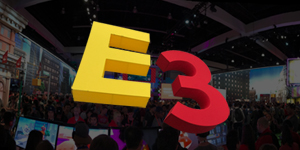Extra: Pokemon’s Strange World of Spin-Offs
Pokemon is no stranger to spin-offs. In fact, Nintendo’s pocket monsters have been in more spin-off titles than main games by a ratio of over two to one. Many of these off-shoots feel like natural extensions of the Pokemon world: Pokemon Mystery Dungeon lets fans see and control how Pokemon interact amongst themselves, while Pokemon Ranger lets players expand beyond the role of a trainer to become the Pokemon equivalent of a park ranger. But with over thirty different spin-offs already released, there are bound to be some games that make less sense. Take the recent announcement of the Pikachu detective game. In this upcoming 3DS title, players team up with a Pikachu to solve crimes and stop an evil, blue Pikachu doppelganger who not only talks, but also features bizarre motion-captured facial animations. It’s strange and it’s barely Pokemon related, yet its experimental nature is nothing new for the franchise. Below, we look at three other Pokemon spin-offs that may (or may not) be good games in their own right, but certainly took the series in unexpected directions.
Pokemon Channel
To many, the Pokemon franchise embodies adventure, exploration, and that Gotta Catch ’em All mentality. To the developers of Pokemon Channel, the franchise apparently embodied sitting and staring at a television. In this 2003 GameCube title, players were tasked with testing a new television network designed by Professor Oak that appeals not just to humans, but to their Pokemon as well. Together with a Pikachu, it was up to players to see all these tests through. Each channel offered different activities such as taking a Pokemon quiz, buying items to decorate the room, and getting a daily fortune. Players could unlock additional channels by going to one of four outside areas, each of which offered a rotating group of other Pokemon to interact with.

In many ways, Pokemon Channel acted a sequel to the Nintendo 64’s Hey You, Pikachu!, which was a logical spin-off for Pokemon that let fans interact with Pokemon by voice for the first time. While Channel ditched those often finicky voice controls, it was made by the same developer, Ambrella, and featured much of the same virtual pet gameplay that centered on keeping Pikachu happy. For example, if you tried to pry Pikachu away from the in-game TV before his show was over, he would get mad and hold a brief grudge. There were loose connections to other parts of the Pokemon universe as well, including a full Pokemon Mini emulator, an exclusive episode of the anime, and at least in the European version, a way to unlock Jirachi and transfer it into Pokemon Ruby and Sapphire. It just wasn’t enough to make this odd spin-off worthwhile.
Pokemon Dash
When the DS first launched in 2004, Nintendo needed to ensure its “third pillar” would not be a failure. This meant leaning heavily on established franchises in the handheld’s first few months, including Super Mario 64 DS, the demo of Metroid Prime Hunters, and a WarioWare title. Naturally, Nintendo also wanted the Pokemon demographic, but with FireRed and LeafGreen released mere months prior, a set of new main games wasn’t really an option. So instead, Nintendo did what anyone would do: slapped Pokemon on what amounted to a glorified tech demo. In Pokemon Dash, players raced as Pikachu against five other opponents through a set of non-linear checkpoints. By making continuous swiping motions with the stylus, players could steer and “accelerate” Pikachu around each stage, searching for the necessary checkpoints to progress through the race.

The game felt like it was nothing more than a demonstration of how the DS’s new touch screen could be used for analog control, with Pikachu and friends included only to lure in the Pokemon crowd. Even then, the potential for a true Pokemon game was there. Imagine if the maps were various routes from past main Pokemon games with players controlling trainers riding an assortment of Pokemon. That would have been much more compelling, and a more logical tie-in, than what Dash actually was. That’s not to say the game was all bad. While it only has a Metacritic score of 46, there were a few neat features included on the cartridge, including six-player support and the ability to import your team from FireRed, LeafGreen, or Emerald to create a course shaped like the Pokemon in your party. It just wasn’t enough to make this a game worthy of the Pokemon name.
Pokemon Trozei
Along with the racing game genre, the DS era also saw Pokemon continue to dabble in puzzle games. By the time Pokemon Trozei released in early 2006, we had already seen Pokemon Puzzle League for Nintendo 64 and Pokemon Puzzle Challenge for Game Boy Color, two titles that were clearly cash-ins but did a surprisingly good job of tying in traditional Pokemon concepts such as beating gym leaders. Pokemon Trozei, on the other hand, forged its own path – and not just with a name made entirely of made-up words. The biggest tie-in Trozei had with Pokemon was that the puzzle pieces themselves were the heads of different Pokemon, representing a battle against an evil team known as the Phobos Battalion. The only way to beat this gang of Pokeball-stealing criminals was by lining up four Pokemon in a row. This would zap the opponent Pokemon away using a device called the Trozei Beamer, allowing protagonist (and secret agent) Lucy Fleetfoot to win the battle.

In other words, Pokemon Trozei was simply a match-four puzzle game similar to Tetris or Bejeweled. The puzzle pieces could have easily been gems, marbles, or even the heads of Pikmin or Animal Crossing villagers, but Nintendo chose to leverage Pokemon. There’s nothing particularly wrong with that, and honestly, it was a fun game. There were a variety of modes, including head-to-head multiplayer, and the game did introduce an interesting wrinkle in the match-four formula by allowing players to briefly clear out sets of only two or three pieces if they successfully matched five pieces at once. If nothing else, the game’s existence acted as a good set of Pokemon training wheels for developer Genius Sonority, who also made the GameCube’s Pokemon Colosseum and Pokemon XD: Gale of Darkness, as well as the Wii’s Pokemon Battle Revolution.
What’s next for Pokemon?
Pokemon X & Y ushered in a new era for the franchise that is sure to result in more spin-offs. The difference now is that the quality of the spin-offs is arguably improving as developers figure out how to best combine the core concepts of Pokemon – the battling, the training, and the exploration – with new gameplay ideas. Ambrella, the developer of both Pokemon Channel and Pokemon Dash, has found a successful formula with the Pokemon Rumble series. As mentioned above, Pokemon Trozei developer Genius Sonority also made a number of successful Pokemon RPGs that both felt like true Pokemon experiences and still offered unique gameplay elements. With the upcoming Pikachu detective game and rumored Pokemon fighting game, franchise architects Game Freak are now beginning to explore other ways they can present Pokemon to players as well. All this points to a bright future for Pokemon and its many spin-offs.



